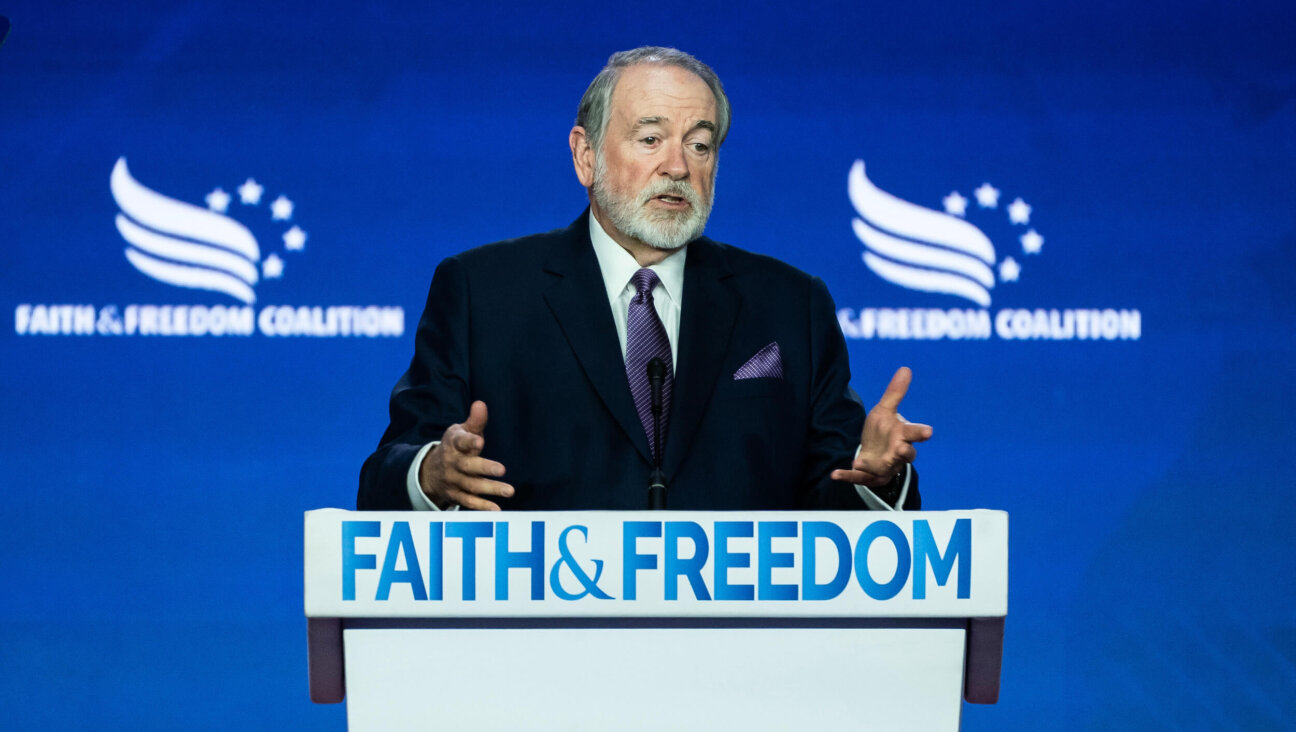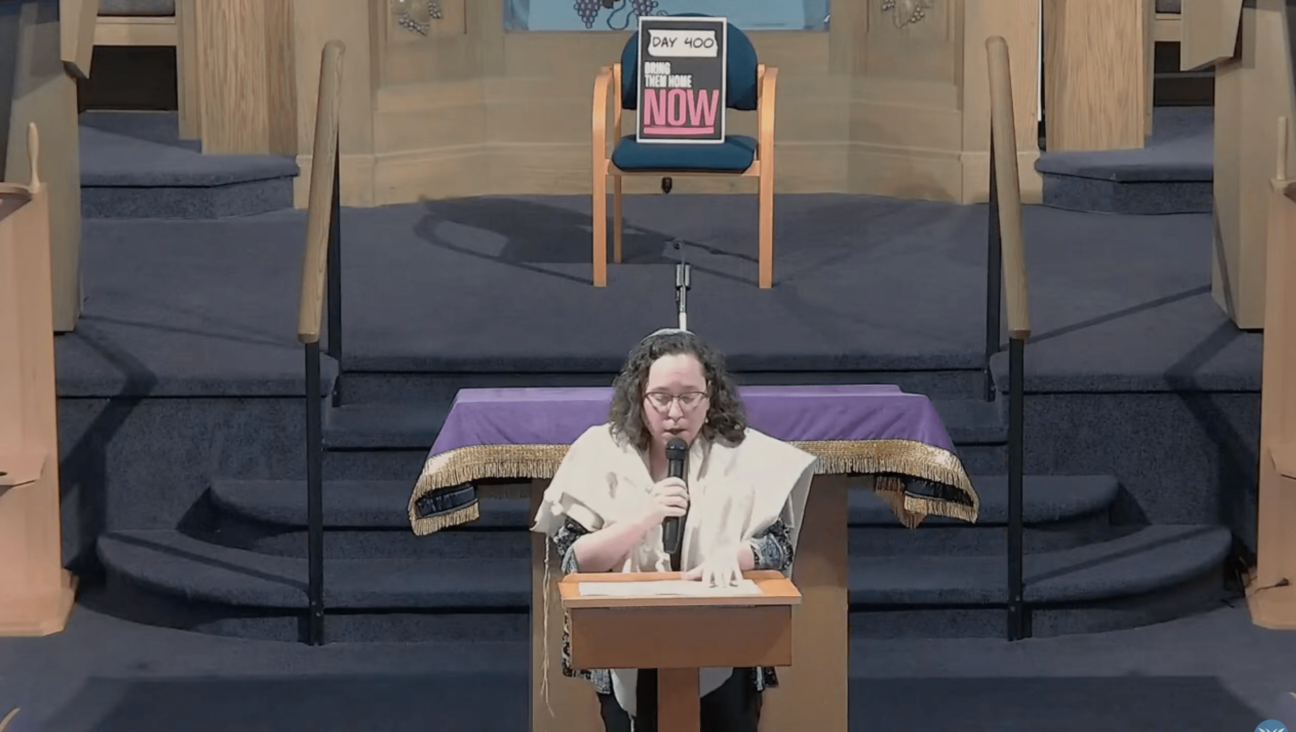The Feel of Revolution, But the Hour Is Late
Where exactly — or even approximately — is “the center”? Is the center necessarily “the mainstream?” What if, instead of the conventional normal distribution — two dwindling slopes trailing off from a large hump between them — the distribution looks more like a “U,” with most people at either end and the middle nearly empty? Or an “L,” with most people off to one side?
There are endless possibilities. I write on the morrow of the rousing opening session of the much-publicized J Street conference, in Washington, D.C. The folks of J Street insist that they in fact represent the American Jewish mainstream, even though there has been substantial pushback in the weeks before the conference. They cite polling data that show most Americans Jews support a two-state solution to the Israel/Palestine conflict and that most support President Obama’s active involvement in moving the peace process along — J Street’s signature positions.
But Israel’s ambassador to the United States snubbed the conference, to which he’d been invited, an invitation he’d surely have accepted if the Israeli government thought J Street were part of the American Jewish mainstream. Both Bill Kristol’s Weekly Standard and Marty Peretz’s New Republic attacked J Street, and the key organizations of the American Jewish community were thunderously silent in their response both to its emergence and to its conference.
In its planning, J Street faced a more serious problem than the frost of others. J Street is only 18 months old, and in the course of those months it has been dazzling in its ability to win press coverage. Much of the time, that coverage was nearly breathless, as if until J Street there’d been no outlet for those American Jews who were troubled by the policies of Israel’s government. But of course there had been. Americans for Peace Now, the Israel Policy Forum, Brit Tzedek v’Shalom, among a respectable number of others, had been fighting the good fight for years. Yet suddenly, J Street managed not only to put itself on the map; it became the map.
It brought four new things to the table: major-league funding, a political action committee legally entitled to make campaign contributions, an unprecedented skill at public relations — and Jeremy Ben-Ami, whose brainchild and workchild J Street was and is. Nor is who showed up at the table soon after J Street’s birth been merely incidental to its success. The election of Barak Obama meant that J Street was aligned with the policies of the president of the United States. Thus to argue that J Street is somehow subversive is to take vicarious aim at Obama himself. Some people are untroubled by that; most, so the polls suggest, believe that the president’s approach, so different from that of his predecessor, deserves support.
Are the center-left and the left the new mainstream? It’s far too early to make that judgment, and there will surely be considerable sniping by the traditional mainstream to marginalize J Street. For now, what can be said with confidence is that J Street has already avoided the classic pitfall of the left; it has avoided the exaggeration of small differences. J Street, with its financial clout and its PR savvy, might easily have taken a “if you’re not with us, you’re against us” approach, surrounding itself with a deep ideological moat. Instead, it laid down a broad welcome mat, and 20 organizations came into its tent. Among these, at least two were partners in planning, the others more or less active participants. Sharing credit? Not turf-conscious? Though still very much in its infancy, this bold move to inclusiveness attests to J Street’s precocious maturity.
In a way, the entire phenomenon is at the same time somewhat insane. A two-state solution? That has been the American position for years; it is, however reluctantly, the position of the Israeli government; it is the position of a substantial majority of American Jews. So what in the world is the big deal? More: It is late in the day. Friends just back from extended visits to the region, including time spent with Palestinians in the West Bank and Gaza, tell me that the talk there is all about a one-state solution. If that, then night. So how can it be that the emergence of a new organization, committed to open debate and discussion, firmly and fervently within the Zionist consensus on the overriding issue of our time, home to a vigorous understanding that for Israel to live in peace and security as a democratic Jewish state it must embrace a viable Palestinians state next door, that all that has the feel of revolution?
There were very many young people at the J Street conference. By his studied absence, the Israeli ambassador to the United States sent a message to these young people: You are not welcome in the camp. You had the audacity to criticize our war in Gaza; you oppose the immediate imposition of sanctions on Iran; you do not take your cues from our preferences and decisions. No matter, then, that so many find you a breath of fresh air in an awfully stale room, no matter that you seem to care, to really care, for Israel’s safety and welfare. Go away.
That message is, in a word, intolerable. In two words, it is both stupid and intolerable.
A message from our CEO & publisher Rachel Fishman Feddersen

I hope you appreciated this article. Before you go, I’d like to ask you to please support the Forward’s award-winning, nonprofit journalism during this critical time.
At a time when other newsrooms are closing or cutting back, the Forward has removed its paywall and invested additional resources to report on the ground from Israel and around the U.S. on the impact of the war, rising antisemitism and polarized discourse.
Readers like you make it all possible. Support our work by becoming a Forward Member and connect with our journalism and your community.
— Rachel Fishman Feddersen, Publisher and CEO






















